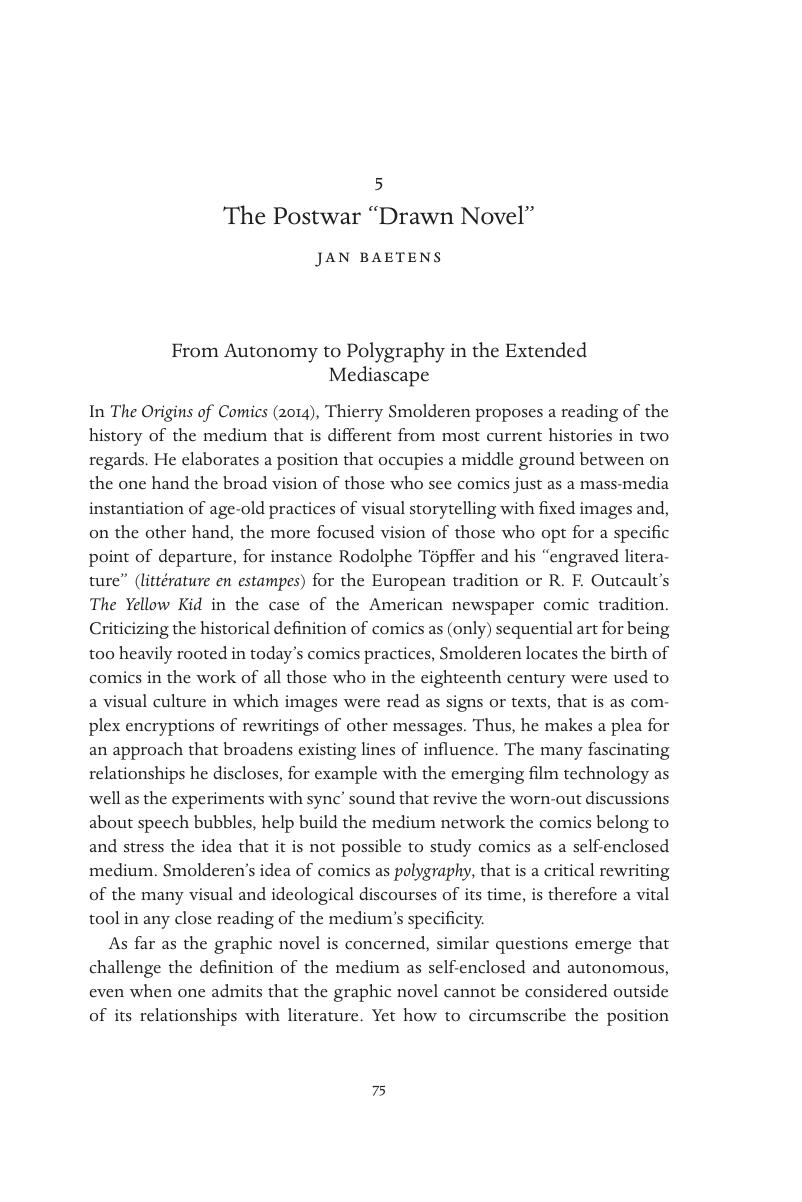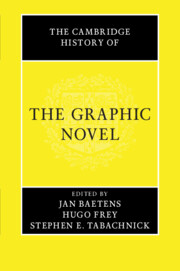Book contents
- The Cambridge History of the Graphic Novel
- The Cambridge History of the Graphic Novel
- Copyright page
- Contents
- Illustrations
- Contributors
- 1 Introduction
- Part I 1799–1978
- 2 The Origins of Adult Graphic Narratives: Graphic Literature and the Novel, from Laurence Sterne to Gustave Doré (1760–1851)
- 3 Long-Length Serials in the Golden Age of Comic Strips: Production and Reception
- 4 Long-Length Wordless Books: Frans Masereel, Milt Gross, Lynd Ward, and Beyond
- 5 The Postwar “Drawn Novel”
- 6 Harvey Kurtzman and the Influence of Mad Magazine
- 7 When Realism Met Romance: The Negative Zone of Marvel’s Silver Age
- 8 Beat-Era Literature and the Graphic Novel
- 9 Henry Darger, Comics, and the Graphic Novel: Contexts and Appropriations
- 10 Underground Comix and the Invention of Autobiography, History, and Reportage
- 11 Jules Feiffer, Creative and Intellectual Ally of the Graphic Novel (and of Other Critical/Editorial Voices)
- Part II 1978–2000
- Part III 2000 to the present day
- Bibliography
- Index
- References
5 - The Postwar “Drawn Novel”
from Part I - 1799–1978
Published online by Cambridge University Press: 30 July 2018
- The Cambridge History of the Graphic Novel
- The Cambridge History of the Graphic Novel
- Copyright page
- Contents
- Illustrations
- Contributors
- 1 Introduction
- Part I 1799–1978
- 2 The Origins of Adult Graphic Narratives: Graphic Literature and the Novel, from Laurence Sterne to Gustave Doré (1760–1851)
- 3 Long-Length Serials in the Golden Age of Comic Strips: Production and Reception
- 4 Long-Length Wordless Books: Frans Masereel, Milt Gross, Lynd Ward, and Beyond
- 5 The Postwar “Drawn Novel”
- 6 Harvey Kurtzman and the Influence of Mad Magazine
- 7 When Realism Met Romance: The Negative Zone of Marvel’s Silver Age
- 8 Beat-Era Literature and the Graphic Novel
- 9 Henry Darger, Comics, and the Graphic Novel: Contexts and Appropriations
- 10 Underground Comix and the Invention of Autobiography, History, and Reportage
- 11 Jules Feiffer, Creative and Intellectual Ally of the Graphic Novel (and of Other Critical/Editorial Voices)
- Part II 1978–2000
- Part III 2000 to the present day
- Bibliography
- Index
- References
Summary

- Type
- Chapter
- Information
- The Cambridge History of the Graphic Novel , pp. 75 - 91Publisher: Cambridge University PressPrint publication year: 2018

